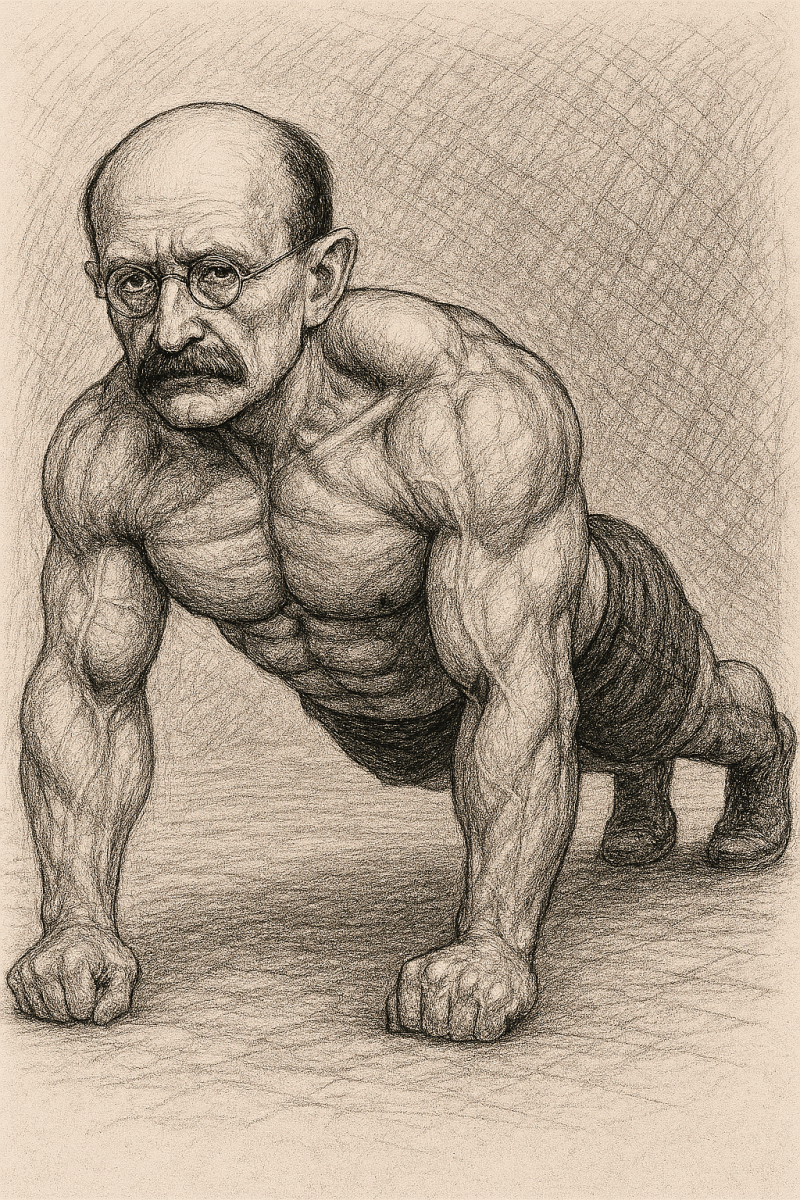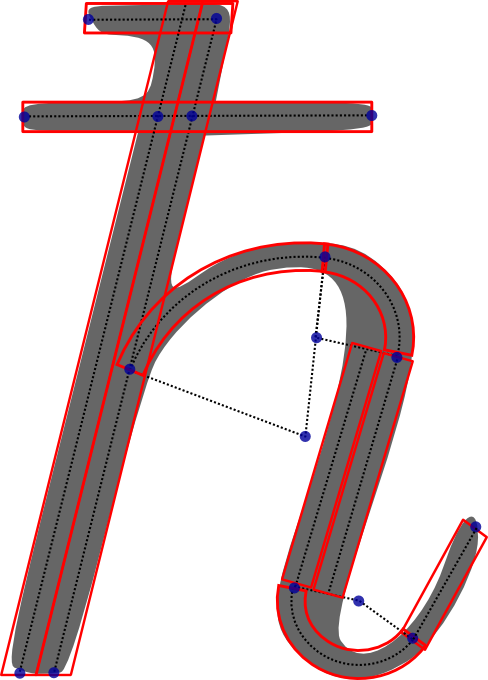
The image above is taken from the first lecture, about Planck power. Though not as well known as Planck mass, Planck length, ... the fundamental scale of power is quite interesting (and ironically does not involve h-bar, just G and c). The AI generated image is not meant to scare you into thinking you're in for a workout. Rather, it tries to make clear that we are committed to bringing you a fun course! Turns out Microsoft Copilot knows the difference between "Planck" and "plank".
Most quantum mechanics texts spend a lot of pages on formalism and are spare and very predictable in the phenomena that are covered. This course is different. Phenomena are front and center, with formalism developed as necessary. Of course this comes with the understanding that you've already had one shot of formalism, and maybe even a booster! There are no texts that take this approach to teaching quantum mechanics, so we are going to try an experiment. The "book" will take shape, with your help, over the course of the semester. In lectures, the instructor will be working from notes that students take turns transcribing to a LaTeX document on Overleaf. Understandably these will be rough, with smart-phone photos pasted in as necessary. But an expert editing staff will clean these up in time for doing the homework problems. Students rotate through the role of "scribe" and participation is voluntary and does not count toward your grade. If you don't know LaTeX, no problem! Just use one of the existing chapters/lectures as a template and replace the text and equations with your notes from class. It's a great opportunity to learn the leading typesetting language of physics, if you don't know it already, or to fine-tune your technique if you have some experience. You must be enrolled in the course in order to collaborate on the book project and to see the lectures and homework assignments. However, since you may still be deciding whether to take the course, here are the first 11 pages.
Your course grade will be based on short, weekly homework assignments. Instead of exams there is a writing project called "My Favorite Effect". Your effect should involve quantum mechanics in some way, even if it's just a quantum-inspired technique for solving a problem. Some of the phenomena discussed in lecture lend themselves to extensions and generalization and are great opportunities for achieving your lifetime goal, which of course is to have an effect named after you! To avoid duplication, email the title of your effect and it will be posted on this website for others to see.
Lectures: 11:40-12:55, 219 Phillips Hall
Instructor: Veit Elser, 426 PSB email
Grader: Chinhsan Sieng, 430 PSB email
Announcements
- Homework 1 (lecture 1, exercises 1-3) was due today (9/3). The two students who enrolled late get a 1 week extension.
- Homework 2 (lecture 2, exercises 1-4) is due 9/10.
- Homework 3 (lecture 3, exercises 1-3) is due 9/17. The advance-problem-solving-team is thanked for spotting an error in exercise 3, which has now been corrected!
- Because of a missing 2pi in the definition of the classical action, your solution to exercise 2 of homework 2 will be off by the same factor. You will not be penalized for this! Thanks to Henry Nester for catching this!
- Reports of my retirement have been greatly exaggerated.
- Take advantage of the current stretch of great weather by finding, on foot, the headwaters of six-mile creek (shown above). Hint: it's near the Roy Park Nature Preserve.
- Homework 4 (lecture 4, exercises 1-3, 5) is due 9/24.
- Apologies for changing the numbering of the exercises in lecture 4 --- it won't happen again. The original numbering has been restored. If your homework was based on the changed numbering you will still get credit for the exercises you did.
- Homework 5 (lecture 5, exercises 1-3) is due 10/1.
- Homework 6 (lecture 5, exercise 4 & lecture 6, exercises 1-2) is due on the Wednesday after Fall break, 10/15
- "Favorite Effect" term papers are due on the last day of instruction. Start writing this week! At the very least, submit your topic by the end of this week.
- You may use an AI as a writing assistant on the term paper. If you do, then you must acknowledge your AI and give a complete list of all the instructions/prompts that were used.
- Homework 7 (lecture 7, exercises 1-4) is due
10/22. This due date has been extended to 10/27. - Homework 8 (lecture 8, exercises 2-4) is due 11/3.
- Homework 9 (lecture 9, exercises 1, 3, 4, 6) is due 11/10.
- I’m very concerned about the recent drop in lecture attendance. The coursework requirement in the Cornell physics program is low by most standards. I imagine A&EP is no different. Also, by now you must realize the undergraduate metrics no longer apply: no one actually cares about your grades. The only thing that matters is that you pass the course, and a huge part of that is attending lecture. Later, when you join a research group, you will be treated as a colleague, a co-worker on the front lines. Please hold up your end of that unspoken agreement by showing up at 219 Phillips.
- Homework 10 (lecture 10, exercises 1-3) is due 11/17.
- Be sure to read lecture 11 on the Golden Rule, even though it will not be covered in-class.
- Homework 11 (lecture 11, exercises 1-2 & lecture 12, exercise 1) is due 12/1 (later because of the E&M final and Thanksgiving).
- There will be one more homework assignment.
- The Levitron
- Last homework assignment, due 12/8: lecture 12, exercises 2-4.
- Term papers are also due on 12/8. Printed submissions are appreciated but PDFs submitted via email are accepted without penalty. Remember to acknowledge your AI usage, including a list of the prompts that were used.
- Some students have expressed an interest in reading the "favorite effect" papers. I will post your paper below if (1) I get your emailed permission, and (2) I have a PDF copy.
- Term papers with comments and graded homeworks are in your mailboxes. Have a great break!
My Favorite Effect topics
- Environment Assisted Quantum Transfer in Photosynthesis, Xinyi Lin
- Radical-pair Model of Avian Magnetoreception, Josh Clugston
- Quantum Decoherence in the Spin-Boson Model, Xenex Joshi
- Rabi Oscillations, Grace Liu
- The Coherent Spike in Resonance Fluorescence, Jianing Li
- Aharanov-Bohm Effect, Min Gao
- Shubnikov-de Haas Effect, Alesya Dewland
- Quantum Processing with Nuclear Spins in the Brain?, Julian Paz
- Squeezed States of Light, Shan He
- Sokolov-Ternov Effect, Joe Devlin
- Muon-catalyzed Fusion, Henry Nester
- Purcell Effect, Zhiheng Xue
- Elitzur-Vaidman Verification, Zev Goldhaber-Gordon
- Neutrino Oscillations, Zihao Chen
- Klein's Tunneling Paradox, Chun Yu Weng
- Quantum Hall Effect, Calvin Lin
- Squished States of Light, Fadi Farook
- Quantum Zeno Effect, Dylan Sheils
- Hong-Ou-Mandel Effect, Andrii Nykyforchyn
General guidelines
- Five pages maximum (with figures and references and 12-point font).
- Should not be mostly math (e.g. formalism, derivations).
- Save your condensed-matter, many-body topics for a more advanced course. All the phenomena in 6572 are few-body.
- Avoid specialist jargon/acronyms, or be sure to define any topic-specific terms you use.
- PDF submitted by email no later than December 8.

